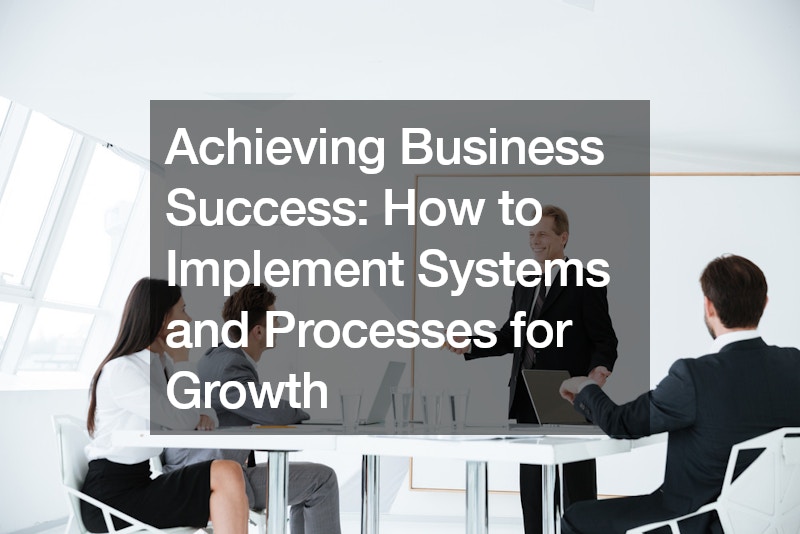In today’s competitive business landscape, efficiency and productivity are paramount for sustained growth and success. Implementing robust systems and processes is one of the most effective ways to streamline operations and drive consistent results. Whether you’re a solo entrepreneur, a small business owner, or the CEO of a large corporation, developing and optimizing your business systems can pave the way for long-term success.
Viewing Your Business as a System
First and foremost, it’s crucial to shift your perspective and view your business as a complex system comprising various interconnected components. Just like a well-oiled machine, each part of your business–from marketing and sales to operations and finance–plays a vital role in driving overall performance and achieving your goals.
By adopting this systems thinking approach, you can gain valuable insights into how different elements of your business interact and identify areas for improvement.
Identifying Key Systems and Subsystems
To begin implementing systems and processes effectively, it’s essential to identify the key systems and subsystems within your business. These may include functions such as marketing, sales, customer service, operations, human resources, finance, and more. For instance, a marketing system may encompass strategies for attracting and converting leads, while a sales system focuses on closing deals and generating revenue. By breaking down your business into these core pillars, you can gain clarity on the specific areas that require attention and optimization.
Mapping Customer and Team Member Journeys
A valuable exercise in understanding your business’s dynamics involves mapping out the journeys of both your customers and team members. For customers, this journey may involve interactions with your brand, from initial awareness to purchase and post-sales support. Similarly, for team members, the journey encompasses various stages, including recruitment, onboarding, training, and ongoing development. By analyzing these journeys, you can identify touchpoints, pain points, and opportunities for improvement, ultimately enhancing the overall experience for both customers and employees.
Starting Small and Scaling Gradually
While the prospect of overhauling your entire business may seem daunting, it’s essential to start small and scale gradually. Rather than attempting to tackle every system at once, focus on prioritizing one area that can yield significant improvements.
Imagine you run a small e-commerce business. You could start by optimizing your website’s checkout process to enhance user experience and minimize cart abandonment rates. Once you’ve streamlined this aspect, you can then shift your focus to improving your product fulfillment process, ensuring timely delivery and customer satisfaction.
Developing Standard Operating Procedures (SOPs)
A critical aspect of implementing effective systems and processes is the development of standard operating procedures (SOPs). SOPs provide clear guidelines and instructions for carrying out specific tasks or processes within your business. Whether it’s a step-by-step guide for onboarding new customers, a protocol for handling customer inquiries, or a checklist for closing sales deals, SOPs ensure consistency, reliability, and efficiency across your organization. By documenting and refining these procedures over time, you can streamline operations, minimize errors, and empower your team to perform at their best.
Harnessing Technology and Automation
In today’s digital age, technology plays a pivotal role in optimizing business operations and enhancing productivity. From CRM software and project management tools to accounting platforms and communication systems, leveraging IT solutions can streamline workflows, automate repetitive tasks, and facilitate seamless collaboration.
In addition to improving internal operations, implementing systems and processes also enables businesses to better adapt to external changes and challenges. By leveraging data analytics and business intelligence tools, businesses can gain valuable insights into market trends, customer preferences, and competitor activities. This enables them to make data-driven decisions, identify new opportunities, and mitigate risks effectively.
However, implementing systems and processes can be complex and challenging, especially for businesses without specialized IT expertise. This is where IT solutions providers play a crucial role. By partnering with an experienced IT solutions provider, businesses can access the expertise, resources, and support needed to design, implement, and optimize systems and processes tailored to their specific needs and objectives.
Continuous Optimization and Improvement
Finally, achieving business success through systems and processes is an ongoing journey that requires continuous optimization and improvement. Monitor key performance indicators (KPIs), solicit feedback from customers and team members, and regularly review and update your systems and procedures to adapt to changing market conditions and evolving business needs. By maintaining a proactive and iterative approach to optimization, you can stay agile, resilient, and primed for long-term success.
In conclusion, implementing systems and processes is essential for achieving business success and driving sustainable growth. By viewing your business as a system, identifying key areas for improvement, mapping out customer and team member journeys, starting small, developing SOPs, harnessing technology, and continuously optimizing your operations, you can position your business for success in today’s competitive marketplace.
.

